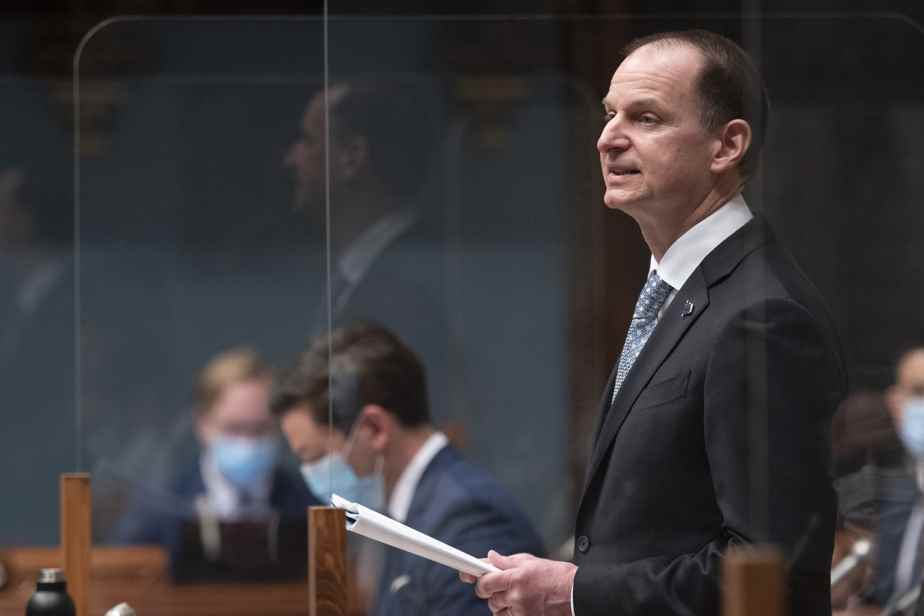In estimating the cost of public funds, a large and pervasive economic error is conveyed by officials in the public and private sectors and sometimes in academia.
Posted at 12:00 p.m.
Since the cost of borrowing is higher for a private company than for a public sector company, the cost of carrying out an activity (investment, production, distribution, supply of goods and services) will necessarily be lower. ceteris paribus both in the public sector and in the private sector.
While it is true that governments get lower interest rates, the fallacy in the above argument is that the full cost of government borrowing is hidden from the interest rate observer. Why do public companies obtain a lower cost of financing, even when their activities, presumably using the same technology and the same factors of production, are identical to those of a private company and therefore exposed to the same risk factors?
Because governments have the right and the power to levy additional taxes to repay their lenders, if necessary, i.e. if their activities or projects fail or fail to meet expectations.
Private companies do not have this option, which justifies a higher rate of interest or return from lenders or investors.
Government borrowing is risk-free for the lenders, hence the low interest rate required. However, from the point of view of taxpayers and end customers, the government’s right and power to increase taxes or reduce the quality of services to cover the financial difficulties of its projects has a very real cost.
This cost borne by taxpayers is simply swept under the rug. Public borrowing may be risk-free for lenders, but certainly not for taxpayers. In other words, all the risks of the projects are transferred to the taxpayers, which means that the State suffers none and can therefore finance itself at a risk-free rate.
The justification of huge public deficits on the basis of an argument that financing costs are lower for the public than for the private sector is also fallacious.
In a recent article (“A Pervasive Economic Fallacy in Assessing the Cost of Public Funds”, Canadian Public Policy Volume 48 Issue 1, March 2022), I discuss specific cases where this error is present, including, among others, the Quebec Generations Fund, CDPQ Infra’s REM and BC Hydro’s Site C hydroelectric megaproject.
In the first case, the comparison between the cost of Quebec’s debt and the return of the fund managed by the Caisse de depot et placement is flawed because the cost of the debt is grossly undervalued.
In the second case, it is the compensation for the capital invested by the government at a rate equivalent to the cost of the public debt that is at fault and represents a form of spoliation of tax-paying citizens.
In the third case, the profitability of the project largely depends on a false evaluation of the costs based on the low interest rates paid by the government on the funds invested in the Site C project.
A more recent example of this major error is provided by the calculation of the financial performance of Investissement Québec (IQ), the powerful investment fund of the Government of Québec.
In its 2021-2022 annual report (June 2022), IQ writes: “Investissement Québec aims for a long-term average return on equity threshold equivalent to at least the Government of Québec borrowing rate. This performance target is specified in the Investment Quebec Act updated in 2019. … The Company recorded a 3-year adjusted return on equity of 9.3% for fiscal year 2021-2022 compared to 9.6% in the previous fiscal year. The Québec government’s comparable borrowing rate was 1.9% for the year. The adjusted return on equity for the past three years exceeded the set target by 7.4%. »
The error is glaring. The erroneous analysis of IQ’s cost of equity, obviously endorsed and even endorsed by the Office of the Prime Minister, the Ministry of Economy and Innovation and the Ministry of Finance, helps to justify in part the significant performance bonuses for IQ staff and management.
I also address in my article the generic case of public business support programs (aid, loans, guarantees, subsidies, etc.), programs often justified by the fallacious argument that the cost of financing is lower for the public than for the private. In reality, the total cost of borrowing, more generally the total cost of public capital, for similar activities and projects is the same for public and private.
A less lax management of public funds is necessary, even urgent. Miscalculations, misinformation, mismanagement and misleading risk analysis will end up backfiring as always on citizens, both taxpayers and consumers.

